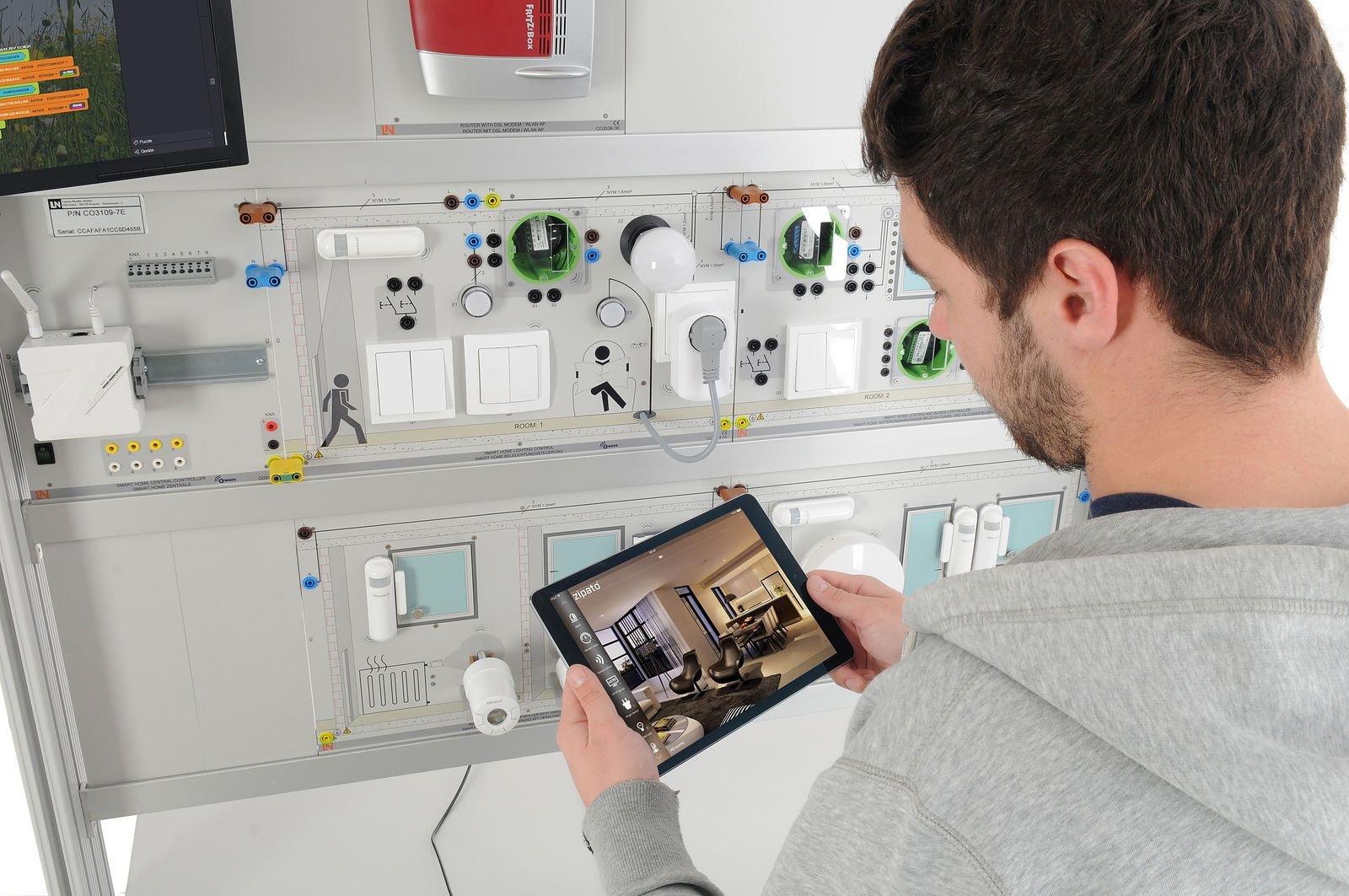You deserve a home that works for you—one that saves you money and adds real value when it’s time to sell.
Smart home automation offers powerful, actionable ways to:

- Trim your monthly energy bills
- Enhance convenience and comfort
- Increase your property’s resale value
In this deep-dive guide, you’ll discover proven automation tricks, backed by the latest data and expert insights, to transform your home into an efficient, high-value asset.
Table of Contents
- Why Smart Home Automation Matters Today
- Top Energy-Saving Automation Tricks
- High-Impact Devices & How They Pay for Themselves
- Automation Strategies That Boost Resale Value
- Comparing Smart Thermostats: Savings & ROI
- Implementing Voice-Controlled Routines
- Optimizing Lighting for Comfort & Savings
- Security Automations That Elevate Home Worth
- Maintaining & Future-Proofing Your Smart Setup
- Frequently Asked Questions
- Conclusion: Your Roadmap to a Smarter, More Valuable Home
Why Smart Home Automation Matters Today
Smart home automation isn’t a gimmick. It’s a strategic investment that:
- Cuts Energy Bills: Smart thermostats alone save 8–15% on heating and cooling costs, translating to $50–$150 per year (ENERGY STAR, Project Drawdown®).
- Enhances Convenience: Automate daily routines—lights, locks, climate—so your home adapts to you.
- Drives Resale Value: Homes with smart features often sell 5–8% above market expectations (House Digest, Definitive Electronics).
- Future-Proofs Your Property: Tech-savvy buyers expect integrated automation.
Smart automation addresses two core pain points: high utility bills and stagnant home equity. By following the strategies below, you’ll gain both short-term savings and long-term value.
Top Energy-Saving Automation Tricks
1. Smart Thermostat Scheduling
- Set back temperatures automatically during work hours and overnight.
- Use geofencing to adjust climate when you leave/re-enter home.
- Benefit: 8–12% heating savings, 10–15% cooling savings (ENERGY STAR, What is Smart Energy?).
2. Peak-Time Energy Management
- Integrate your thermostat with utility peak-pricing signals.
- Shift high-energy activities (laundry, EV charging) to off-peak hours.
- Benefit: Reduce peak-time rates by up to 20%.
3. Automated Window Shades
- Program shades to close during hottest afternoon hours.
- Combine with thermostat setback for maximum cooling efficiency.
- Result: Lowers indoor temperatures by up to 10–15°F (The Sun).
4. Smart Power Strips & Outlet Sensors
- Detect “vampire” devices and cut power when not in use.
- Schedule off-peak power cycles for energy-hungry appliances.
- Savings: 5–10% reduction in standby power consumption.
High-Impact Devices & How They Pay for Themselves
| Device | Avg. Cost | Annual Savings | Payback Period |
|---|---|---|---|
| Smart Thermostat | $200 | $50–$150 (8–15% bills) | 1–3 years |
| Automated Window Shades | $500 | $30–$80 (cooling reduction) | 4–6 years |
| Smart Lighting (LED + Hub) | $150/bulb | $50–$100 (lighting) | 1–2 years |
| Smart Power Strip | $30 | $10–$20 (standby devices) | < 2 years |
| Smart Leak Sensor & Valve | $100 | Prevents costly damage (~$2K) | Immediate (risk-avoidance) |
Table: Device costs vs. savings help you prioritize investments based on payback period and risk mitigation.
Automation Strategies That Boost Resale Value
Google-indexed listings show homes mentioning “smart thermostat” or “smart lighting” sell 1–5% above expected price (YouTube).
Key Tactics:
- Integrated Security Systems: Combine cameras, doorbells, and locks into one app. Buyers pay a premium for turnkey security.
- Voice-Activated Control Zones: Group rooms into “Away,” “Sleep,” and “Entertain” modes.
- Energy-Efficiency Report: Provide prospective buyers with documented utility savings history.
In a 2024 survey, 62% of homeowners said smart features increased their home’s resale value (CEPRO).
Comparing Smart Thermostats: Savings & ROI
Below is a quick comparison of leading smart thermostat brands to help you choose the best fit for your home:
| Brand | Savings (Annual) | $ Savings Estimate | Unique Feature |
|---|---|---|---|
| Nest | 12% heating, 15% cooling | $140 | Learning algorithms, mobile app |
| Ecobee | 10–23% overall | $120–$180 | Room sensors for hot/cold spots |
| Honeywell | 8–15% | $100–$150 | Compatibility with most HVAC |
| Sensi | 5–10% | $75–$100 | Low cost, easy installation |
Data compiled from independent studies and manufacturer white papers (Oasis Heating & Cooling, Google Store).
Implementing Voice-Controlled Routines
You can leverage Amazon Alexa, Google Assistant, or Apple HomeKit to create intuitive voice routines:
- “Good Morning” Routine:
- Gradually raise temperature by 2°F over 30 minutes.
- Turn on kitchen lights at 50% brightness.
- Brief your morning headlines.
- “Away From Home” Mode:
- Lower thermostat by 3–5°F.
- Switch off non-essential outlets.
- Arm security sensors and smart locks.
These voice routines add convenience and demonstrate tech maturity—key selling points for buyers.
Optimizing Lighting for Comfort & Savings
Smart LED bulbs and hubs let you:
- Schedule Dimming: Automate lights to dim at sunset.
- Motion-Triggered Lighting: Lights turn on only when someone enters a room.
- Circadian Cycle Sync: Adjust color temperature throughout the day for better sleep and productivity.
Savings: Up to 70% less energy than incandescent bulbs, plus automation can cut lighting costs by an additional 10–20%.
Security Automations That Elevate Home Worth
A unified security platform not only deters intruders but adds resale appeal:
- Smart Doorbells: Record motion events and livestream via your phone.
- Automated Floodlights: Sync with motion sensors to spotlight potential threats.
- Smart Locks with Auto-Lock: Ensure doors always lock behind you.
Statistic: 45% of buyers consider security features a deal-breaker (Today’s Homeowner).
Maintaining & Future-Proofing Your Smart Setup
To keep your system reliable and attractive:
- Regular Firmware Updates: Ensure security patches and feature enhancements.
- Centralized Management App: Choose platforms that unify all devices (e.g., Samsung SmartThings).
- Scalable Hub: Invest in hubs that support both current and emerging protocols (Zigbee, Matter).
Document your setup in a simple guide for future owners—this small touch reinforces value.
Frequently Asked Questions
Q1: What is the average cost to install a smart home system?
A: Basic setups (thermostat + lighting) start around $400. Full systems may reach $2,000–$5,000 depending on scale.
Q2: Will smart features really increase my home’s ROI?
A: Yes. Studies show a 5–8% resale value boost when selling homes with integrated smart tech (House Digest, Definitive Electronics).
Q3: How soon will I recoup my smart-home investment?
A: Many devices pay back within 2–4 years through energy savings. Critical devices like smart thermostats often recoup within 1–2 years.
Conclusion: Your Roadmap to a Smarter, More Valuable Home
By combining energy-saving automations, voice routines, and security integrations, you’ll:
- Slash utility bills by up to 15–20% per year.
- Enhance daily convenience, making your home more enjoyable.
- Boost resale value, commanding a premium in today’s competitive market.
Start small—install a smart thermostat or LED bulbs—then scale up. Document your savings and automations. When it’s time to sell, you’ll present a turnkey, tech-driven home that buyers can’t resist.
Ready to take control of your home’s future? Begin implementing these automation tricks today and watch both your bills and stress levels drop—while your home’s market value climbs.


